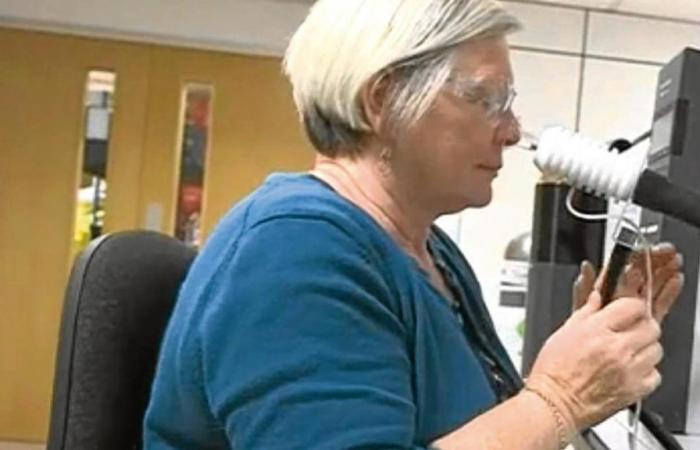OfCesare Peccarisi
A Perth nurse noticed that the man always smelled of musk, but didn’t understand what it was until she entered a room where there were some Parkinson’s patients
Is it possible to “smell” Parkinson’s? Before the disease presents its classic symptoms (tremor, rigidity and slowness of movement, together with balance disorders, hunched posture, difficulty walking), patients experience a particular smell similar to muskperhaps due to the characteristic sebaceous hypersecretion of the skin that derives from alterations of small autonomic nerve fibres which are distributed throughout the various organs. This phenomenon appears to precede the onset of the disease by even years.
The smell of Les
The discovery occurred years ago thanks to Joy Milne, a 72-year-old nurse from Perth, Scotland, with a keen sense of smell (hyperosmia): after several years of marriage, she realized that something had changed in her husband Les, an anesthesiologist in the same hospital as her. It was an evening in 1982, Les was 32 years old: he came home from work with a new and unpleasant smell, which will never leave him again, but neither he nor anyone else, except his wife, could detect it. The smell of our skin is mainly linked to the secretions of two glands, those sweat which produce sweat (with which we eliminate body waste diluted in water which evaporates contributing to our thermoregulation, as well as chlorine, sodium and potassium ions) and those sebaceous which produce sebum, a liquid with skin defense and lubrication properties, secreted mostly near the hair bulbs, so much so that these glands are missing in the palms of the hands, while they abound in the armpits.
Non-motor symptoms
How could sweating have anything to do with Parkinson’s? «The disease does not limit itself to causing motor disorders such as tremor, but also presents non-motor symptoms including a widespread impairment of small nerve fibers which control the cardiovascular, urinary, gastrointestinal, pupillary, endocrine and, precisely, skin and sweatso much so that since the last century it has been said that “the skin is the mirror of Parkinson’s” – says the professor Alfredo Berardelli of the Sapienza University of Rome and past president of the Italian Society of Neurology (Sin) -. These alterations concern the autonomic nervous system, which for example makes the heart beat automatically without having to think every moment about making it contract, and are called “autonomic” or “vegetative”.
Seborrheic dermatitis
And it is precisely the alteration of the autonomic system that often (52-59% of cases) causes the development of seborrheic dermatitis in Parkinson’s patients, a skin eczema caused by infection with the Malassezia fungus which, following the altered production of defensive sebum, colonizes various areas of the skin, causing redness and patches of yellowish, greasy flaking all over the body, especially on the scalp. To develop, this fungus needs a large production of skin lipids of which sebum is rich: for this reason it often takes root in puberty, when the excess of androgens leads to increased sebum production.
The self-help group
Les Milne’s disease diagnosis came when he was 44 years oldbut his wife had begun to notice a change in his odor twelve years earlier: it was always a little musky, even if he had just finished showering. Not only. Les had become increasingly detached, irascible, apathetic. He had strange behaviors, sleep disturbances, difficulty moving. And it was only when Joy accompanied Les to a self-help group for patients organized by the Parkinson’s Association UK that, finding himself among many others with the same disease, she felt as if she were invaded by that same smell and she realized that maybe it wasn’t something that was just about her husband.
The olfactory experiment
He then decided to ask for explanations: the first doctor he spoke to, Tilo Kunath, parkinsonologist at the University of Edinburghat first he was skeptical, but then he decided to scientifically verify this presumed olfactory ability of women and organized a research comparing six patients and six normal subjects, to see if he could distinguish the sick from the healthy simply by smelling their t-shirt. The shirts were all the same and Joy didn’t know who they belonged to. His answers were almost completely correct, getting 11 out of 12 diagnoses right. In the wrong case he said that a healthy control had the “scent of Parkinson’s”. Eight months later that person phoned the doctors because she had strange symptoms, she was summoned and the diagnosis was Parkinson’s disease: Joy’s intuition hadn’t been wrong, in fact it had been prophetic.
Identify key molecules
From these results a second larger pilot study began on 24 subjects, which involved the Universities of Edinburgh, Manchester and London to chemically identify the molecules that Joy senses when she smells this strange musky odor that she associates with Parkinson’s disease. «For those who are used to measuring phenomena scientifically, this ability to identify key molecules with which to diagnose the disease is almost embarrassing – he commented Perdita Barran of the School of Chemistry at Manchester University -. As always happens in discoveries made for “serendipity”, the Milnes were convinced that Joy’s abilities could be used for medical purposes and we are trying to do just that: identify molecules likely to be candidates for predict illness from sweat». Les died in 2015, aged 65. Studies on Parkinson’s odor continue. Also thanks to Joy Milne.
June 15, 2024 (changed June 15, 2024 | 4:19 pm)
© ALL RIGHTS RESERVED






